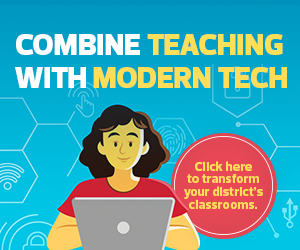For example, the Mississippi Connects Digital Learning Instructional Guide offers lessons for educational leaders hoping to strike a middle ground between developing new resources from scratch and using existing resources that don’t fit their context.
The digital instructional guide draws on existing resources and the latest research to suggest best practices tailored to the particular use cases of districts throughout the state, as well as the state educational agency’s own standards, content and priorities. Each section of the guide includes links to MDE standards and tools and additional educator-facing resources from nonprofit groups and academic institutions.
The guide’s development was funded by the Mississippi Alliance of Nonprofits and Philanthropy, with support from CDW•G and Intel. MDE digital learning specialists throughout the state drove the process, ensuring it was relevant for local teachers and staff who would be implementing the practice guide. The external support at the state level freed district and school leaders from having to devote time and effort to developing their own digital learning resources from scratch.
School, district and state leaders can follow that lead: Instead of reinventing the wheel, they can adapt proven approaches for local contexts, even if they’re not developing a resource as comprehensive as the Mississippi Connects Digital Learning Instructional Guide.
2. Invest in PD and Coaching Aligned with District Priorities
From the outset, MDE leaders recognized that professional development was essential to the success of Mississippi Connects. PD was included in the initial cost model for the program that was presented to legislators and adopted into law, but the form of that support evolved over time.
Initially, the project plan called for friEdTechnology, the PD provider chosen by the MDE, to offer webinars and other resources about best practices for digital instruction in general. Shortly after it began offering the virtual workshops, courses, webinars and summits, friEdTechnology’s staff realized there was a missing step.
Amy Mayer, the company’s CEO, recalls, “We found that we needed to connect directly with districts in Mississippi, form relationships and provide opportunities for them to share what exactly they needed.”
In short, there was no one-size-fits-all solution to PD.
Elizabeth King, friEdTechnology’s senior director of project management for Mississippi, spoke with leaders from nearly half of the state’s 148 districts, enabling the vendor to identify resources that responded directly to challenges that each district leader cited.
RELATED: Use these professional development tips to improve teacher retention in K–12 schools.
A similar logic was at play in the development of Mississippi Connects’ coaching program, an effort to provide one-on-one support to teachers and administrators on using educational technology and strengthening digital learning practices. This program offers a range of coaching supports, including classroom observations, customized professional learning community facilitation and district-specific digital learning action planning.
Not all schools, districts or state educational agencies will have the resources to provide intensive PD or coaching. Yet all school communities can draw on a central lesson of Mississippi Connects’ approach: the importance of making PD and coaching responsive to the specific digital learning needs and priorities of practitioners.
3. Commit to Goals, but Respond to Changing Stakeholder Needs
Like so much in K–12 education, programs to support digital teaching and learning practices can’t remain static. Needs, circumstances and available resources change, and it’s important for programs to reflect those shifts.
The Mississippi Connects program offers insight into how educational leaders can manage such changes. While PD and other supports were built in to the program from the beginning, the initial focus was on device procurement, distribution and connectivity. Over time, Mississippi Connects evolved as new circumstances and resources emerged.












